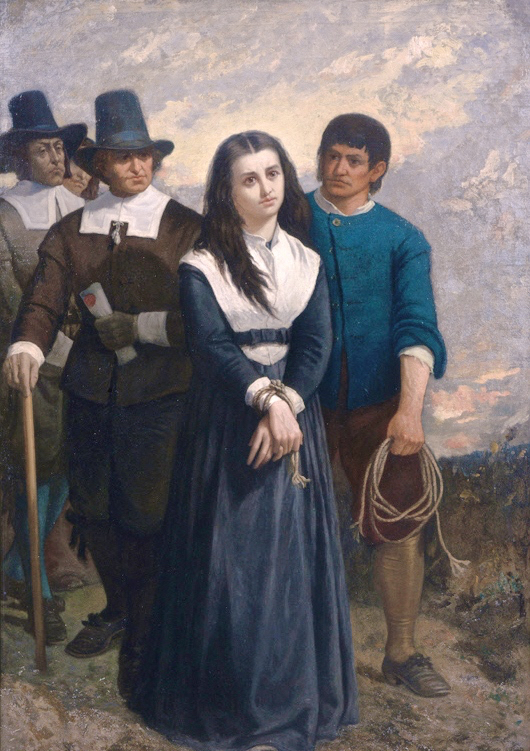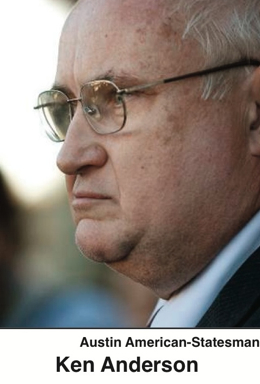Rascals case in brief
In the beginning, in 1989, more than 90 children at the Little Rascals Day Care Center in Edenton, North Carolina, accused a total of 20 adults with 429 instances of sexual abuse over a three-year period. It may have all begun with one parent’s complaint about punishment given her child.
Among the alleged perpetrators: the sheriff and mayor. But prosecutors would charge only Robin Byrum, Darlene Harris, Elizabeth “Betsy” Kelly, Robert “Bob” Kelly, Willard Scott Privott, Shelley Stone and Dawn Wilson – the Edenton 7.
Along with sodomy and beatings, allegations included a baby killed with a handgun, a child being hung upside down from a tree and being set on fire and countless other fantastic incidents involving spaceships, hot air balloons, pirate ships and trained sharks.
By the time prosecutors dropped the last charges in 1997, Little Rascals had become North Carolina’s longest and most costly criminal trial. Prosecutors kept defendants jailed in hopes at least one would turn against their supposed co-conspirators. Remarkably, none did. Another shameful record: Five defendants had to wait longer to face their accusers in court than anyone else in North Carolina history.
Between 1991 and 1997, Ofra Bikel produced three extraordinary episodes on the Little Rascals case for the PBS series “Frontline.” Although “Innocence Lost” did not deter prosecutors, it exposed their tactics and fostered nationwide skepticism and dismay.
With each passing year, the absurdity of the Little Rascals charges has become more obvious. But no admission of error has ever come from prosecutors, police, interviewers or parents. This site is devoted to the issues raised by this case.
On Facebook
Click for earlier Facebook posts archived on this site
Click to go to
Today’s random selection from the Little Rascals Day Care archives….
Click for earlier Facebook posts archived on this site
Click to go to
Today’s random selection from the Little Rascals Day Care archives….
Is clinging to error really ‘how science progresses’?
 Nov. 30, 2012
Nov. 30, 2012
In 1993 (January-February issue), the journal Child Abuse & Neglect published “Sexual Abuse of Children in Day Care Centers” by Susan J. Kelley, Renee Brant and Jill Waterman. This is from the article’s abstract:
“Sexual abuse of children in day care center settings has received considerable attention in the past decade. The nature and extent of allegations of sexual abuse in day care poses unique challenges to clinicians. Cases of sexual abuse in day care typically involve multiple victims and multiple perpetrators, and use of extreme threats to prevent disclosure….”
The article’s misinformation has spread far beyond its original readership. Google Scholar shows “Sexual Abuse of Children in Day Care Centers” to have been cited in other publications no fewer than 36 times, as recently as this year.
I asked Child Abuse & Neglect to publish a retraction.
I received this response from editor-in-chief David A. Wolfe, professor of psychology and psychiatry at the University of Toronto:
“The journal only retracts papers if there are significant errors or other problems, such as plagiarism, health risks etc. Otherwise, it is up to the scientific community to decide when new knowledge or findings would usurp those previously published. This is the case in many areas of research, whereby older (sometimes well-accepted) findings are no longer given credence due to newer findings. It is not feasible or appropriate to remove the previous findings, as that is how science progresses.
“Unless you are aware of specific errors in the 1993 data, rather than drawing different conclusions, the journal would not take any further action.
“I trust this resolves your concerns.”
Well, no, actually it doesn’t. This is what I wrote back to Dr. Wolfe:
“The problem with ‘Sexual Abuse of Children in Day Care Centers’ is not a matter of ‘different conclusions’ being drawn from the data. The entire concept of the article is false: There was never any ‘multiple victim, multiple offender’ sexual abuse in day cares, any more than there was witchcraft in Salem. As has been thoroughly documented by social scientists such as Stephen J. Ceci and Maggie Bruck, and eventually validated in the legal system, all these ritual-abuse cases resulted from a moral panic.
“This passage is from the Retraction Guidelines of the Committee on Publication Ethics: ‘Retraction is a mechanism for correcting the literature and alerting readers to publications that contain such seriously flawed or erroneous data that their findings and conclusions cannot be relied upon. Unreliable data may result from honest error or from research misconduct.’
“And this is from Tom Reller (vice president of global public relations at publisher Elsevier): ‘Our journals, and academia overall, do better when shining a light on bad actors and bad science.’ ”….
“This is my concern, not yours, but ‘bad science’ fostered numerous convictions in Little Rascals, McMartin and other day care prosecutions of the 1980s and early 1990s. A retraction in a journal such as yours would be a significant step toward obtaining true exoneration for these defendants.”
No response from Dr. Wolfe. Maybe he’s reconsidering?
A national epidemic of supposed ‘remembering’
Aug. 30, 2013
“The Edenton case is not just a horrifying aberration. Adults across the country are suddenly ‘remembering’ that they were abused as children, and filing civil lawsuits and criminal charges against aged parents…
“Claims of long-ago child abuse, ‘blocked out’ from memory until now, have become a common defense tactic. Unscrupulous ‘therapists’ and sensationalist writers feed the frenzy.
“Anything goes against accused abusers, especially the right to a fair trial.”
– From an editorial in the Arkansas Times (Aug. 5, 1993)
Will Edenton, too, ever be ‘honest about what took place’?

nyhistory.org
“Witch Hill: The Salem Martyr,” oil on canvas, by Thomas Satterwhite Noble, painted in 1869. Notes from the gallery label: “The young woman who posed as the condemned witch was a librarian in the Cincinnati library, and was a lineal descendant of a woman who was actually hanged as a witch in 17th century Salem. Painted in Cincinnati.”
Jan. 14, 2016
“Researchers announced this week they have confirmed the plot (in Salem, Mass.) where 19 people accused of witchcraft were hanged in a wave of hysteria that swept this seaside city in 1692.
“Salem plans to mark the ignominious spot, Mayor Kimberley Driscoll said: ‘This is part of our history, and this is an opportunity for us to be honest about what took place.’
“Neither of two previous plans for a memorial there (in 1892 and 1936) went anywhere. Emerson ‘Tad’ Baker, a Salem State University professor who helped pinpoint the location, said the desire by some to forget the witch trials was probably to blame.
– From “Researchers pinpoint site of Salem witch hangings” by Laura Crimaldi in the Boston Globe (Jan. 13)
In Edenton, the “desire by some to forget” still dominates, but should it ever weaken…..
![]()
Texas ex-DA pays price, however little and late
 Nov. 20, 2013
Nov. 20, 2013
“GEORGETOWN, Texas – A former Texas prosecutor who won a conviction that sent an innocent man to prison for nearly 25 years agreed Friday to serve 10 days in jail and complete 500 hours of community service.
“Ken Anderson also will be disbarred and fined $500…. Anderson faced up to 10 years in prison if convicted of tampering with evidence in the 1987 murder trial of Michael Morton, (who) was released in 2011 after DNA evidence showed he didn’t beat his wife to death.
“Morton watched from the front row of the gallery Friday as the man who helped convict him now sat at the defense table, just as he once did. Morton smiled and was hugged by family members after the judge adjourned….
“During a weeklong Court of Inquiry earlier this year, special prosecutor Rusty Hardin presented witness testimony and other evidence to show Anderson kept evidence from Morton’s attorneys at his trial….
“Anderson said he couldn’t remember if he had evidence at the time of the trial that could have cleared Morton, but if he had had such material, he would have turned it over to the defense team.”
– From “Former Texas Prosecutor Gets Jail for Conviction that Sent Innocent Man to Prison” by the Associated Press (Nov. 8)
Even the righteous Jack McCoy withheld exculpatory evidence at least once, but of course the “Law & Order” DA was a fictional character – unlike Ken Anderson and the Little Rascals prosecutors and their unfortunate victims.











0 CommentsComment on Facebook